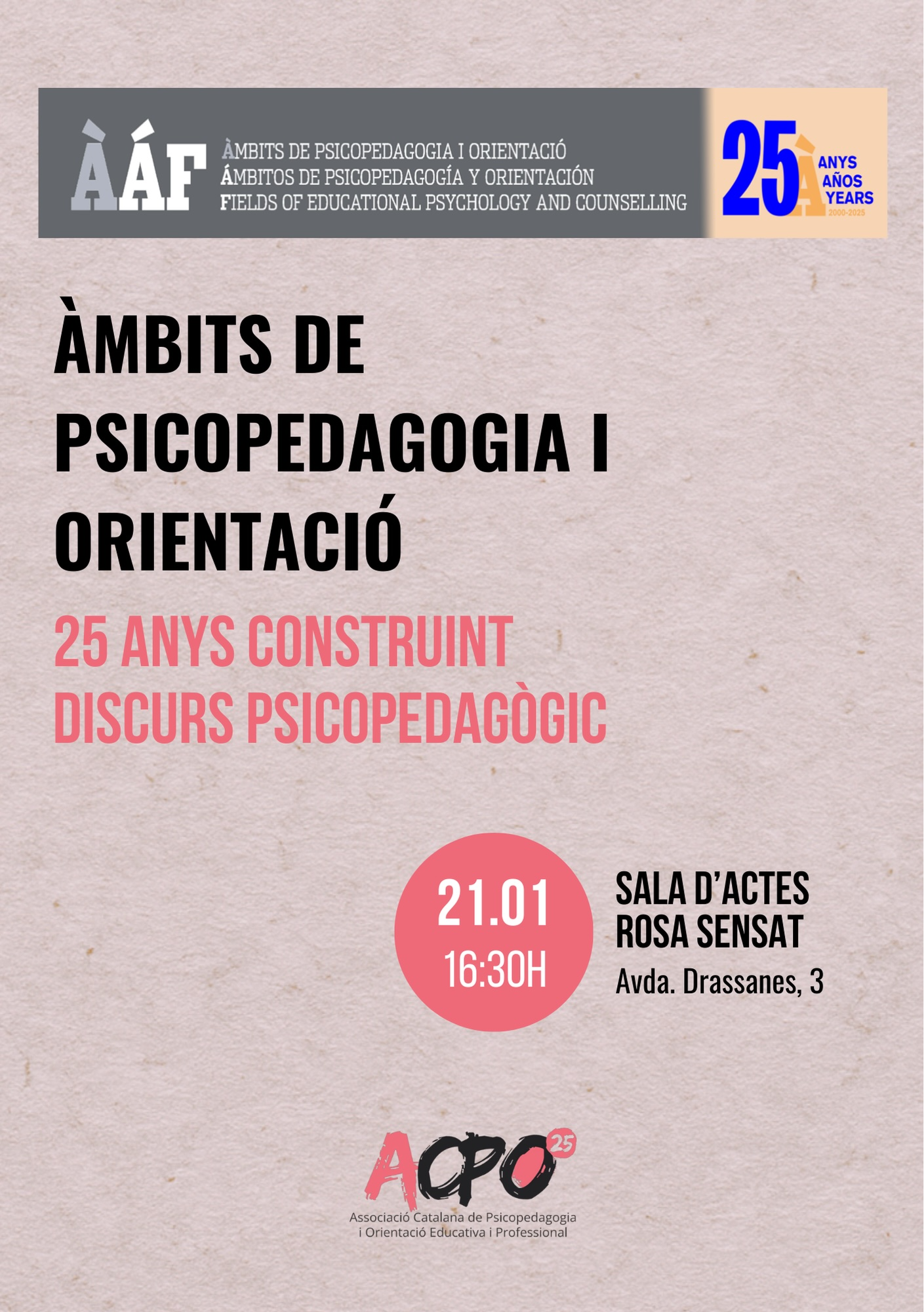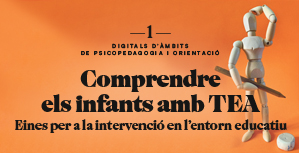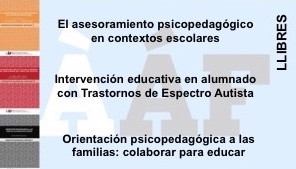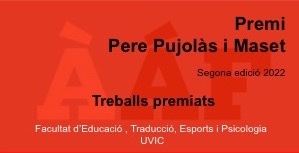Els centres d'educació especial, suport a la inclusió
DOI:
https://doi.org/10.32093/ambits.vi53.1983Paraules clau:
Educació especial, Centres d'educació especial, Inclusió educativa, Canvi educatiu, Centre de recursos per a la inclusió, Formació de mestresResum
Les polítiques a favor de la inclusió educativa demanen una reconsideració del paper i de les estructures dels centres d’educació especial. En aquest article, en primer lloc, s’analitza la situació des d’una perspectiva internacional. Hi ha acord en la necessitat de superar la separació històrica que hi ha hagut entre l'educació especial i l’ordinària, i proposar nous rols, nous enfocaments i perspectives per aconseguir un únic sistema educatiu sensible a la diversitat de necessitats dels alumnes. Malgrat la posició no és unànime, la majoria dels països s’inclinen per considerar els centres d'educació especial centres d'excel·lència en l'atenció i educació dels alumnes amb necessitats de suport més extenses i, al mateix temps, en organitzacions de suport i promoció de l’ educació inclusiva en el sector de població on estan ubicats.
En segon lloc, es presenta el projecte de transformació dels centres d’educació especial que DINCAT va liderar i impulsar als inicis de 2016 a Catalunya. Els objectius del projecte eren, per un costat, promoure un canvi en la “mirada” dels professionals dels centres d’educació especial que es traduís en un canvi en les pràctiques, a través de la reflexió, la formació i l’acompanyament; per l’altre, ajudar els centres a que esdevinguin part d’un sistema inclusiu en la comunitat en la que estan (barri, poble, comarca); en definitiva, convertir-se en centres de recursos per a la inclusió.
Finalment es presenta el programa CEEPSIR ESPIGA-EAP, promogut per l’EAP de l’Alt Penedès i l’Escola Delta-Espiga, que neix amb la voluntat d’avançar cap a un escola inclusiva a la comarca en condicions d’equitat i d’igualtat d’oportunitats. L’objectiu principal d’aquest programa és acompanyar els centres educatius a disposar d’un protocol de bones pràctiques educatives per a donar resposta a l’alumnat amb més necessitat de suport.
Referències
Agran, M., Jackson, L.,Kurth, A., Ryndak, D., Burnette, K., Jameson, M., Zagona, A., Fitzpatrick, H., i Wehmeyer, M. (2020).Why aren’t students with severe disabilities being placed in general education classroom: Examining the relations among classroom placement, learner outcomes and other factors. Research and Practice for Persons with Severe Disabilities, 45, 4-13.
Ainscow, M. (2007). Toward a more inclusive education. Where next for special schools? A R. Cigman (Ed.), Included or excluded? The challenge of the mainstream for some SEN children (pp., 128-139). London: Routledge.
Baker, J. (2007). The British Government’s strategy for SEN: implications for the role and future development of special schools. Support for Learning, 22, 72-77.
Baker, J. (2009). Special school headship in times of change: impossible challenges or golden opportunities? British Journal of Special Education, 36, 191-197.
Brown-Chidsey, R. i Bickford, R. (2016). Practical handbook of multi-tiered systems of support. Building academic and behavioral success in schools. New York: The Guilford Press.
Decret 150/2017, de 17 d’octubre, de l’atenció educativa a l’alumnat en el marc d’un sistema educatiu inclusiu (DOGC núm. 7477, de 19/10/2017).
Department of Education (2006). The Future Role of the Special School. Ireland.
European Agency for Development in Special Needs Education (2013). Organization of Provision to Support Inclusive Education. Literature review. Odense, Denmark: European Agency for Development in Special Needs Education.
European Agency for Special Needs and Inclusive Education (2015). Agency Position on Inclusive Education Systems. Odense, Denmark. www.european-agency.org/publications.
European Agency for Special Needs and Inclusive Education (2017). Herramienta de autorreflexión para entornos de educación inclusiva en la infancia temprana. (E. Björck-Åkesson, M. Kyriazopoulou, C. Giné y P. Bartolo, eds.). Odense: Dinamarca
Florian, L. (2019). On the necessary co-existence of special and inclusive education. International Journal of Inclusive Educations, 23, 691-704.
Font, J., Castells, M. i Ramon, D. (1016). PACBAL (Prova d’avaluació dels processos bàsics de l’aprenentatge de la lectura). Vic. Escola d’Educació Especial l’Estel.
Font, J. I Giné, C. (2016). Educació especial: Un pas endavant. Reptes. Revista d’Educació Especial i Inclusiva, 1, 26-32.
Font, J. I Simó-Pinatella, D. (2017). El FACTS: Una entrevista per a l’avaluació funcional. Reptes. Revista d’Educació Especial i Inclusiva, 2, 46-49.
Font, J., Simó-Pinatella, D., Alomar, E., Giné, C., Adam, A.L., Dalmau, M., …i Mas, J. (2013). El rol de los centros de educación especial en Catalunya: perspectivas de futur. Siglo Cero, 44, 34-54.
Fuchs, D., Fuchs, L.S. I Stecker, P.M. (2010). The “blurring” of special education in a new continuum of general education placements and services. Exceptional Children, 76, 301-323.
Giangreco, M.F. (2020). “How can a student with severe disabilities be in a fifth-grade class when he can’t do fifth-grade level work?” Misapplying the least restrictive environment. Research and Practice for Persons with Severe Disabilities, 45, 23-27.
Gibbons, K., Brown, S. i Niebling, B.C. (2019). Effective universal instruction. An action-oriented approach to improving Tier 1.New York: The Guilford Press.
Harrison . P.L. i T. Oakland T. (2003). ABAS-II Sistema para la Evaluación de la Conducta Adaptativa. Madrid: TEA Ediciones
Head, G. i Pirrie, A. (2007). The place of special schools in a policy of inclusion. Journal of Research in Special Educational Needs, 7, 90-96.
Hoover, J.F. i Patton, J.R. (2008).The role of special educator in a multitiered instructional system. Intervention in School and Clinics, 43, 195-202.
Hornby, G. (2014). Inclusive special education. Evidence-based practices for children with special needs and disabilities. New York: Springer.
Kauffman, J.M., Anastasiou, D. i Maag, J.W. (2017). Special education at the crossroads: A crisis of identity and the need for a scientific reconstruction. Exceptionality, 2,139-155.
Llei 12/2009, de 10 de juliol, d’educació (DOGC núm. 5422, de 16/7/2009).
McDonnell, J. i Hunt, P. (2014). Inclusive education and meaningful school outcomes. A M. Agran, F, Brown, C. Hughes, C. Quirk i D. Ryndak (Eds), Equity and full participation for individuals with severe disabilities. A vision for the future (pp. 155-176). Baltimore: Paul H Brookes.
McIntosh, K. and Goodman, S. (2016). Integrated multi-tiered systems of support. Blending RTI and PBIS. New York: The Guilford Press.
McMenamin, T. (2011). The tenacity of special schools in an inclusive policy environment: The New Zeeland situation 1996-2010. Support for Learning, 26, 97-102.
Norwich, B. (2008). What future for special schools and inclusion? Conceptual and professional perspectives. British Journal of Special Education, 34, 136-143.
Norwich, B. (2013). Addressing tensions and dilemmas in inclusive education. Living with uncertainty. New York: Routledge.
Norwich, B. i Gray, P. (2007). Special schools in the new era: conceptual and strategic perspectives. A B. Norwich (ed.), Special schools in the new era: how do we go beyond generalities? Paper 2, Special Educational Needs Policy Options Group 6th Series. Tamworth: NASEN.
Pepper, J., Weitzman, E. (2003).Hablando nos entendemos los dos. Toronto: Hanen.
Rogers, S.L., Dawson, G. i Herrera Gutiérrez, G. (2015). ESDM. Lista de verificación del currículo del modelo Denver de atención temprana. Ávila: Autismo Ávila.
Rojahn, J., Matson, J.L., Lott, D., Esbensen, A.J. i Smalls, Y. (2001). The Behavior Problems Inventory: An instrument for the assessment of self-Injury, stereotyped behavior, and aggression/destruction in individuals with developmental disabilities. Journal of Autism and Developmental Disorders, 31, 577-588.
Rose, J. (2012). Building bridges with others schools: educational partnership in separate settings in England. Support for Learning, 27, 84-90.
SEN Policy Opinions Group (2007). Special schools in the new era: how do we go beyond generalities? Journal of Research in Special Educational Needs, 7, 71-89.
Schalock, R. L., Borthwick-Duffy, S. A., Bradley, V. J., Buntinx, W. H., Coulter, D. L., Craig, E. M., …i Yeager, M. H. (2010). Intellectual Disability. Definition, classification and systems of supports. Washington: AAIDD. Traducció al castellà: AAIDD (2011). Discapacidad Intelectual. Definición, Clasificación y Sistemas de Apoyo. Madrid: Alianza Editorial.
Sundqvist, C., Björk-Aman, C. i Ström, K. (2019). The three-tiered support system and the special education teacher’s role in Swedish-speaking schools in Finland. European Journal of Special Needs Education, 34, 601-616.
NU (2006). Convención de las Naciones Unidas sobre los derechos de las personas con discapacidad. Recuperado de: http://www.un.org/spanish/disabilities/
UNESCO (1994). Declaración de Salamanca. Conferencia Mundial sobre Necesidades Educativas Especiales. Acceso y calidad. Madrid: UNESCO/ Ministerio Educación y Ciencia.
NESCO (2014). Teaching and learning: achieving quality for all; EFA global monitoring report, 2013-2014. UNESCO: Paris.
Wehmeyer, M.L. i Shogren, K.R. (2017). Handbook of research-based practices for educating students with intellectual disability. New York. Routledge.

Descàrregues
Publicades
Número
Secció
Llicència
Els autors/ores conserven els drets d'autor i concedeixen a la revista el dret de primera publicació de l'obra, registrada sota una llicència Creative Commons Reconeixement-NoComercial-Sense Obra Derivada. Aquesta llicència permet la descàrrega de les obres, i que es puguin compartir amb altres sempre que se’n reconegui l'autoria, però no permet que siguin modificades de cap manera, ni ser utilitzades amb finalitat comercial.
















